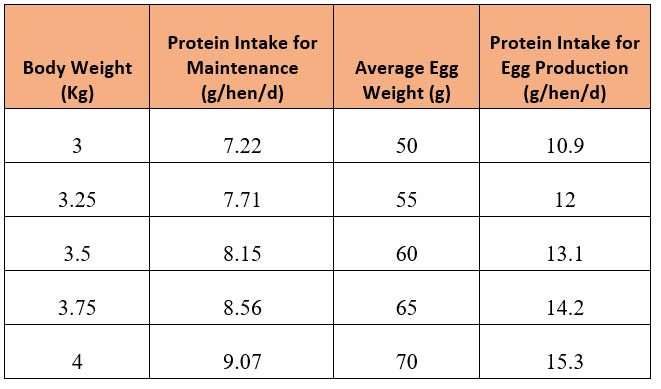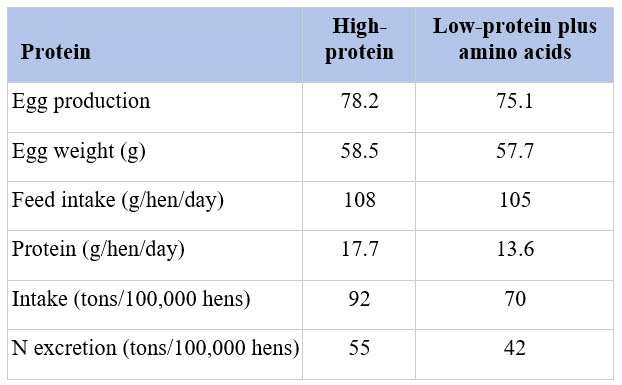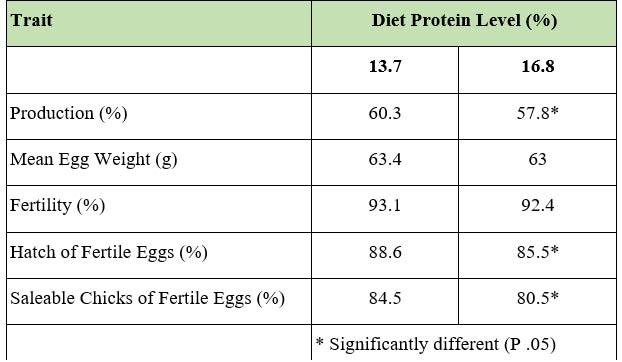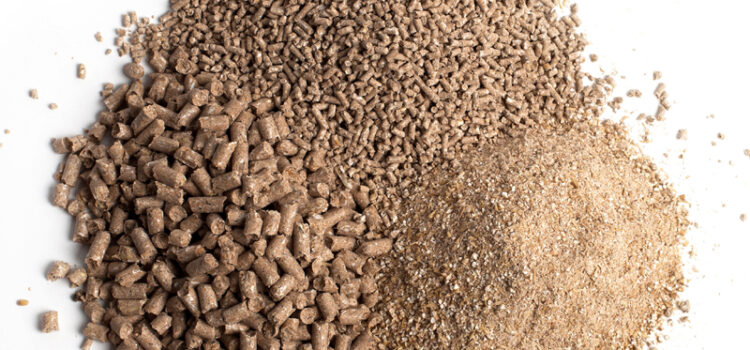Abstract: Protein is the second most substantial nutrient in poultry diets, as well as the most expensive vital ingredient. Reduced feed costs and improved animal protein supply are two important concerns for the current poultry sector. An alternative might be to supplement low protein (LP) diets with more crystalline amino acids. A low-protein diet delivers all of the essential amino acids without going overboard. Low-protein diets can increase animal performance & profitability, play a crucial role in egg development and increased hatchability, provided they are properly balanced. To ensure sustainability, the poultry industry employs low-protein diets which are critical for lowering feed costs and to reduce the risk of nitrogen emissions in the environment.

Category Manager, Agri Commodities
Krimanshi Technologies Pvt. Ltd.
Feeding animals a healthy, balanced diet is a challenge for animal husbandry. In commercial poultry feed, protein is one of the most expensive nutrient. The popularity of low-protein poultry diets has increased in recent years. This diet must contain all essential amino acids that are not synthesized by the animals. Broilers require dietary protein for a variety of purposes, the most significant of which is broiler meat accretion. It has long been established that, rather than crude protein, poultry require a certain quantity and balance of dietary essential amino acids as well as adequate nitrogen for the synthesis of non-essential amino acids. This rationale, together with the affordable availability of free amino acids, has encouraged nutritionists to limit the amount of dietary crude protein in order to minimize feed costs. Low-protein diets can increase animal performance and profitability provided they are properly balanced. If the cost is comparable, giving low-protein diets supplied with all required amino acids can result in greater health and feed efficiency. Now, using synthetic amino acids to decrease a diet’s crude protein content is critical, and this is where economics should benefit the lower-protein diet. Only crystalline lysine, methionine, threonine, and tryptophan are now accessible commercially at acceptable costs.
Why are low-protein diets advantageous for poultry?
- Low-protein diets boost broiler chicken maintenance energy efficiency and minimize performance at high ambient temperatures.
- Low crude protein diet in the starter phase of broiler has an effect on immune development and response throughout the growth period.
- In a low crude protein diet, increasing the lysine level by 0.2% while maintaining the usual requirement of methionine considerably improved the FCR (feed conversion ratio), while the chicken’s growth rate was intact.
- Low-protein diets can increase bird performance, with arginine and glycine being advantageous to broiler performance as well as the intestinal barrier.
- Reduced nitrogen excretion and ammonia emissions from broiler houses might be achieved by lowering the CP content of the feed.
Because of the economic, environmental, and bird welfare benefits, there is a lot of interest in developing low-protein diets for broiler chickens that are balanced with additional crystalline amino acids (Moss et al., 2018). Table 1 showing the dietary protein requirements of broiler chickens at different body weight and egg size.

Effect of low protein diets supplemented with free amino acids
When compared to high protein fed birds, low protein fed birds had 12.8 % greater feed intake, 14% less breast muscle but 97% higher abdominal fat at 22 weeks of age. As a result of the decreased embryonic mortality in the initial part of the laying cycle, hatchability improved by 1.3% (23-45 week of age). Furthermore, during the second phase of the laying cycle, low protein fed birds produced 3.6 more hatching eggs (46-60 week of age). According to estimates, feeding a low protein diet resulted in a profit gain of € 0.53 per breeder. Most broiler breeder hen diets include at least 16 percent CP which offers up to 26 g of CP/d under practical conditions at maximal output and is more than the recommended protein consumption. Such high levels of CP have been shown to be not only unnecessary for optimal performance of broiler breeder hens, but also to have deleterious impacts on hatchability.
The amino acid content of the diet has a significant impact on the efficiency of protein utilization. Some studies have observed satisfactory egg production with CP demands as low as 18.6 g CP with 1,022 mg lysine per bird per day. This means decreased protein requirements could only be achieved by ensuring that the bird’s amino acid needs are satisfied. Synthetic amino acids have made it possible to reduce dietary CP while still providing the amino acid requirements of broiler breeder chickens. Furthermore, the amino acid-supplemented diets had reduced feed consumption and protein intake, resulting in lower nitrogen (N) excretion than the control diets (Table 2).

It’s difficult to differentiate the effect of supplementary protein from the effect of limiting amino acids, particularly methionine, lysine, and tryptophan, in broiler breeder chickens (Harms, 1992). At peak production, a CP intake of 16 g per bird per day were accompanied with intakes of 944 mg of methionine + cysteine and 1,312 mg of lysine per bird per day, was sufficient to ensure egg production. In fact, the present study discovered that these birds had superior egg production persistency than birds on higher-CP diets, especially in the later stages of egg production.
Excess protein in a low-energy diet has been observed to be dissipated as heat after intake, suggesting that a high protein content in broiler feed isn’t beneficial. This indicates that there is a threshold at which the protein content as a nutrient is no longer acceptable (Si et al., 2001), and thus no good results in terms of growth and other performance metrics are anticipated. The increased feed intake observed in broilers given the diet which is high in energy and low in protein, throughout both the starter and finisher phases, resulting in larger cell mass and volume. Low-energy, low-protein combination diets could be fed to broiler chickens in order to maintain an adequate balance of calorie and protein ratio to get satisfying performance, which is beneficial given the poultry industry’s feed shortage. For 8-35 days, dietary exogenous proteases supplementation in a low-protein diet will increase broiler growth performance, nutritional digestibility and physiological response and can be introduced to improve production efficiency. Whitehead et al. (1985) found that a 13.7 percent protein breeder diet resulted in a considerable increase of saleable chicks per breeder when compared to a 16.8 percent protein breeder diet (Table 3).

Selected and rearranged data from Whitehead et al. (1985).
Effect of a low protein diet on chicken’s microbiome
Feed conversion rate was considerably higher in the finisher phase in birds low-protein diet. Reduced crude protein intake (i.e., 82 g/bird during the rearing period) in broilers enhances Lactobacillaceae abundance in the ceca, which appears to be associated with a higher feed conversion rate. Lactobacillus, according to the scientists, can protect the gut against infections and promote effective food and energy extraction in the host.
Effect of low protein diet on immune system
Furthermore, total leukocyte levels in the blood at day 35 were greater in the low-protein diet, the potential advantages of immunological alterations caused by low-protein in the starting phase may help vaccination strategies, disease resistance to various types of field relevant infections, or growth performance recovery post-challenge would be beneficial to the industry.
Effect of low protein diet on nitrogen excretion and ammonia emissions
Broiler and commercial layer chickens excrete 50 to 65 percent of their nutritional nitrogen, as a result, nitrogen overloading in poultry diets continues to be a serious problem that endangers the environment. Nutrition has a lot of potential, and one of the most efficient ways to minimize emissions is to feed low-protein diets. The major objective in this area is to determine the rate of protein reduction that does not adversely influence production qualities and, in certain cases, can even reduce feeding expenses. Low protein diets had the same digestible lysine content and followed the “optimal protein principle” guidelines were able to accomplish a 2% protein reduction without impairing production attributes. Ferket et al. (2002) found that decreasing dietary crude protein levels and optimizing synthetic amino acid supplementation can substantially decrease nitrogen excretion. In younger broilers, feeding low-protein diets resulted in larger N-excretion decrease. In 24-day-old broiler, a 1% protein reduction reduces N excretion by 17.6%, while in 40-day-old broiler, it decreases by 11.5 percent (Table 4).Effect of low protein diet on immune system.

Conclusion:
A low-protein diet should not be one that fails to provide the critical amino acid requirements of animals, causing them to perform poorly. However, if the quality of the protein and its amino acid profile are not taken into account, the lower quantity of dietary protein may be deleterious in some situations. It was shown that by using protein sources that provide the appropriate amounts and proportions of methionine and lysine, it is feasible to lower 2-4 percent of diet protein without compromising weight increase or feed conversion. In order to fulfill the ever-increasing demand for poultry meat in the most sustainable way possible, approaches utilizing crystalline amino acids or exogenous protease added to low-protein diets, the latter being the more recent trend, have become standard industry practice.
Author: Dr. Neelam Chaudhary






